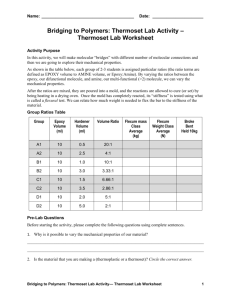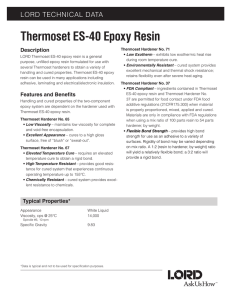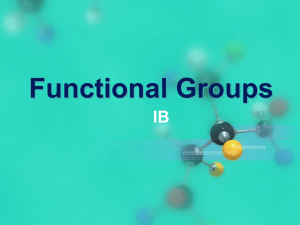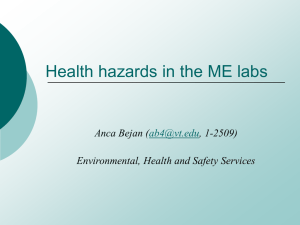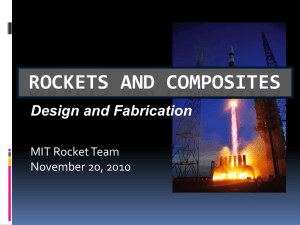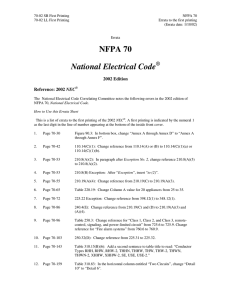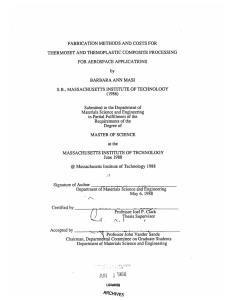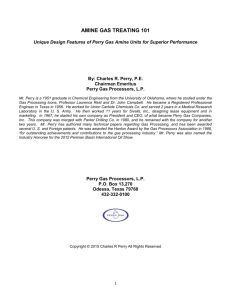Thermoset Lab Worksheet – Answer Key
advertisement
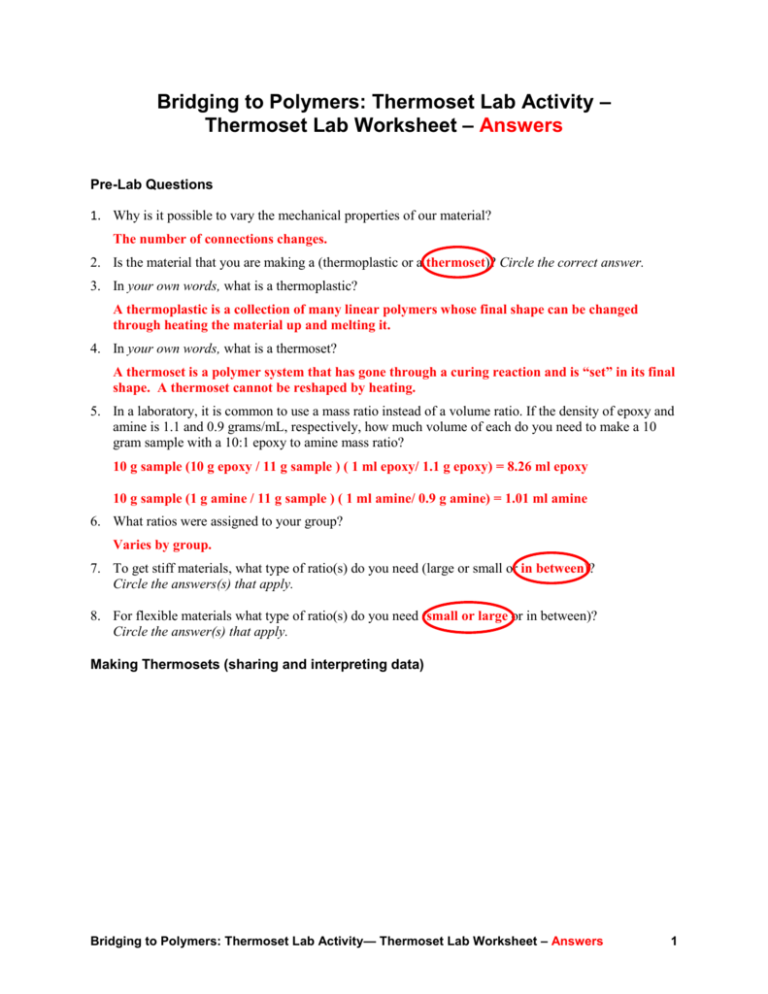
Bridging to Polymers: Thermoset Lab Activity – Thermoset Lab Worksheet – Answers Pre-Lab Questions 1. Why is it possible to vary the mechanical properties of our material? The number of connections changes. 2. Is the material that you are making a (thermoplastic or a thermoset)? Circle the correct answer. 3. In your own words, what is a thermoplastic? A thermoplastic is a collection of many linear polymers whose final shape can be changed through heating the material up and melting it. 4. In your own words, what is a thermoset? A thermoset is a polymer system that has gone through a curing reaction and is “set” in its final shape. A thermoset cannot be reshaped by heating. 5. In a laboratory, it is common to use a mass ratio instead of a volume ratio. If the density of epoxy and amine is 1.1 and 0.9 grams/mL, respectively, how much volume of each do you need to make a 10 gram sample with a 10:1 epoxy to amine mass ratio? 10 g sample (10 g epoxy / 11 g sample ) ( 1 ml epoxy/ 1.1 g epoxy) = 8.26 ml epoxy 10 g sample (1 g amine / 11 g sample ) ( 1 ml amine/ 0.9 g amine) = 1.01 ml amine 6. What ratios were assigned to your group? Varies by group. 7. To get stiff materials, what type of ratio(s) do you need (large or small or in between)? Circle the answers(s) that apply. 8. For flexible materials what type of ratio(s) do you need (small or large or in between)? Circle the answer(s) that apply. Making Thermosets (sharing and interpreting data) Bridging to Polymers: Thermoset Lab Activity— Thermoset Lab Worksheet – Answers 1 Post-Lab Questions 1. Which ratio(s) of amine hardener is/are the stiffest? 10:1 2. Which ratio(s) of amine hardener is/are the softest? 20:1 3. What can you conclude about the amine hardener or what is the general trend between mL versus flexure weight (N)? The stiffest is when the amines are stoichiometrically in balance with the epoxy. Our data showed this to be a 10:1 ratio. (This may differ from theoretical value due to how accurate the students were) The most flexible was the 20:1 before the stoichiometric ratio was reached and once past the stoichiometric ratio, the strength fell to approximately a third of what it was at its peak. Unreacted functional groups (amines) in this case caused loose ends which causes the material to become flexible again. 4. Think back to the bridge analogy, why is there a difference in strength between ratios? When you have just the optimum number of beams for support on a bridge it is very strong. When you have just the optimum number of bonds (stoichiometric ratios) you get a very strong thermoset. Note: The analogy does break down when comparing the chemical to a bridge that has too many extra connections. The chemical bridge will get weaker, but the actual bridge does not necessarily get weaker; it just has wasted materials. Bridging to Polymers: Thermoset Lab Activity— Thermoset Lab Worksheet – Answers 2
